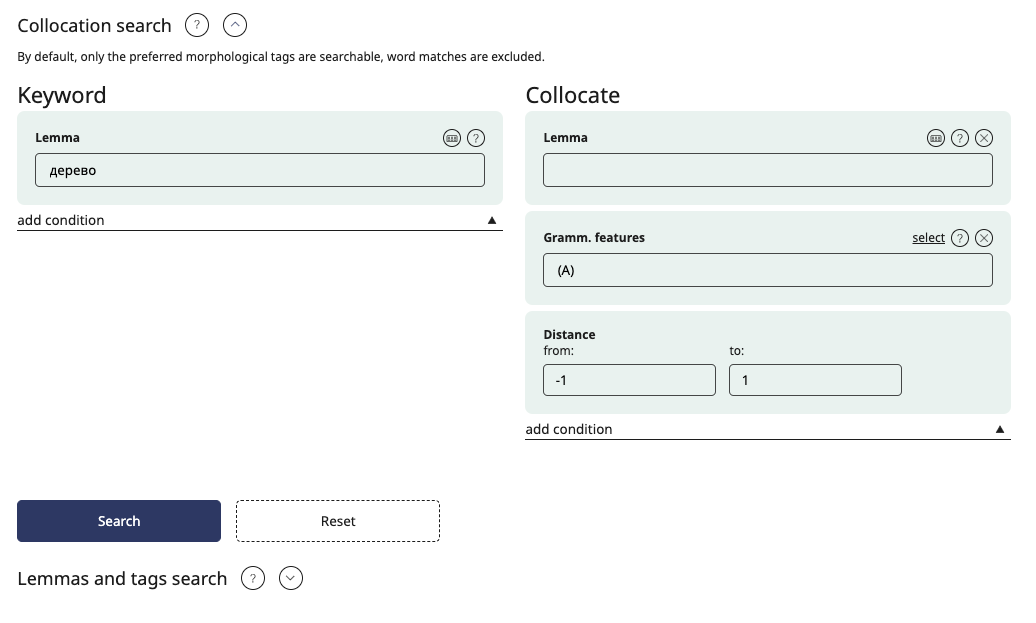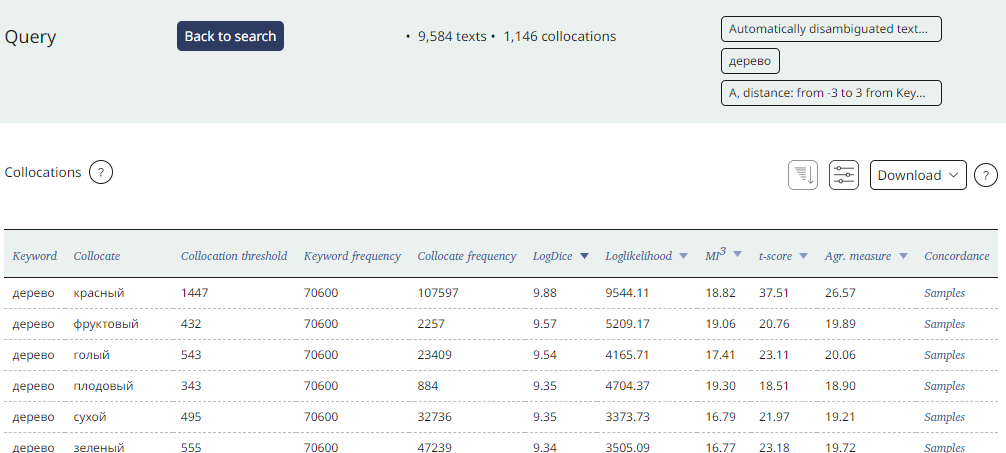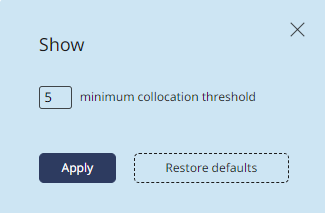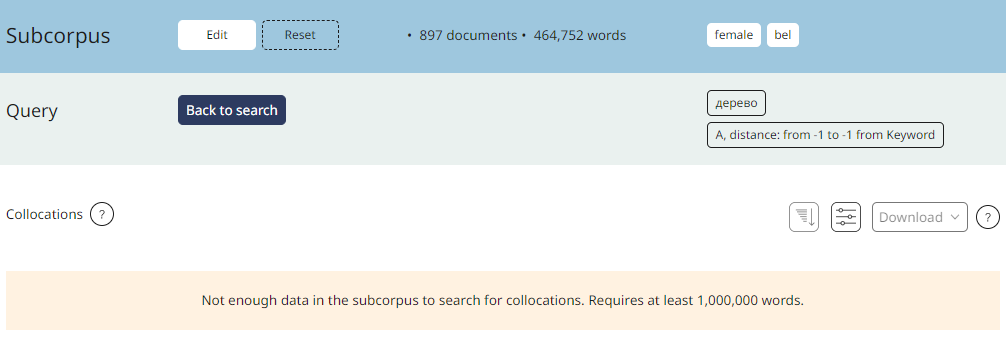How to search for collocations
To search for collocations, you need to specify a keyword and a collocate.
The keyword is the word for which you need to find the most frequent word combinations. You could either specify a concrete lemma or word form, or set the desired grammatical or semantic features. You can also use the wildcard * to search for all keywords.
The collocate is a word that forms a collocation together with the keyword. You can specify a lemma, a word form, or a combination of grammatical or semantic features, or use the wildcard *. You can set the distance between the key and the collocate (no more than five words). This means that we are looking for collocates that occur more often than by chance from the key at a given distance. If you want to find collocates that precede the word in the sentence, then the distance must be specified as a negative number.
For example, in Russian normally the adjective comes before the noun. To find all adjectives that are associated with the word дерево (“tree”), you should set дерево as the keyword in your search query, select the grammatical feature “adjective” for the collocate, and set the distance from -1 to -1.

The collocations are searched only in the automatically disambiguated texts. Zero distances between words are not taken into account, that is, when searching for identical words at any distance from each other, there will be no examples among the results in which the word occurs only 1 time.




